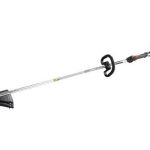CommonRagwort
Courtesy: John Haslam, via Flickr
We discussed how to reclaim your lawn from weeds last week, and as the first step, we pointed out that you need to identify the weed and how to properly treat it. Today, we’ll look at 10 of the most common lawn weeds, how to identify them, and the best treatment for each type of weed.
- Creeping Thistle – An invasive plant highlighted in an earlier post, this weed has light purple flower heads and spiky, wavy leaves that can be uncomfortable to touch. Use a garden fork to dig these out of the lawn, or pull them by hand – just make sure you’ve got a good, thick pair of gloves.
- Common Ragwort – A strange plant with bluish-green leaves and bright yellow flowers, it is the sole food source of some animals while deadly to others, particularly equines. It spreads its seeds quite a bit, so it needs to be pulled out the minute you see it. While it’s toxins can be absorbed through the skin, and gloves are often recommended when pulling it out, it takes quite a bit to be toxic to a human.
- Greater Plantain – Particularly annoying thanks to large, thickly-ribbed oval leaves that can smother the grass underneath, these plants need to be dug out the minute they are noticed.
- Dandelion – This is a weed that should need no description, as pretty much everyone knows what a dandelion looks like. It is one of the most useful weeds in the world, as it is edible, medicinal, can be used in brewing teas, is important food for birds, and is even good for lawns in small amounts, as the roots will even help draw nutrients towards the surface. Still, too many is a bad thing, so pull them out or use weedkiller.
- Sheep’s Sorrel – Contrary to what the name may indicate, this is not a good weed for livestock such as sheep to eat – in fact, it can be toxic in large amounts. This plant has distinct, arrowhead-shaped leaves and small green flowers that turn red as they bloom. It is common in drier, acidic soils, so you won’t often find it around yards that are watered regularly and whose owners put effort into balancing the pH levels. If you do see it, you’ll need to dig out the entire taproot, as it will come up again if any is left in the soil.
- Yarrow – Somewhat attractive, with feathery aromatic foliage and clusters of white flowers, yarrow is still a weed. It is best treated by pulling out the rhizomes by hand. Make sure you get the entire rhizome though, as leaving pieces in the ground can allow it to spread.
- Daisy Weed – One of the most common lawn weeds in the United States, the white petals and round yellow center are quite familiar. Unfortunately, they can take over a lawn and choke out grass. They’re fairly resilient, and herbicides don’t have too great of an effect on them. They’re so bad, they even have a tool named after them – the daisy grubber, which is the best way to remove them.
- Selfheal – Another attractive weed, selfheal blooms with purple flowers. The easiest way to get rid of selfheal is with weedkiller, due to underground runners that you might not be able to pull out of the ground.
- White Clover – Considered weeds by some, but groundcover by others, this plant has some great uses. If you’re a farmer, you’ll be happy to see this in your fields – livestock loves to forage for it. If you’re a house owner searching for the perfect lawn, this can cover over and crowd out grass. In that case, merely pull it out of the soil – it does not root too deeply.
- Slender Speedwell – Originally introduced as a cultivated plant, its rapid spread has caused it to be seen more as a weed. It has kidney-shaped green leaves, and bluish-purple flowers – it bears a passing resemblance to ground ivy. Break up the runners using a hoe and pull them out or attack it with weed killer.
So if you see something popping up in you lawn that you don’t think should be there, take a close look and compare it to what we have mentioned here – there’s a good chance it is one of these weeds. If not, check with a local nursery or look through weed databases online for more information, as well as treatment options.






